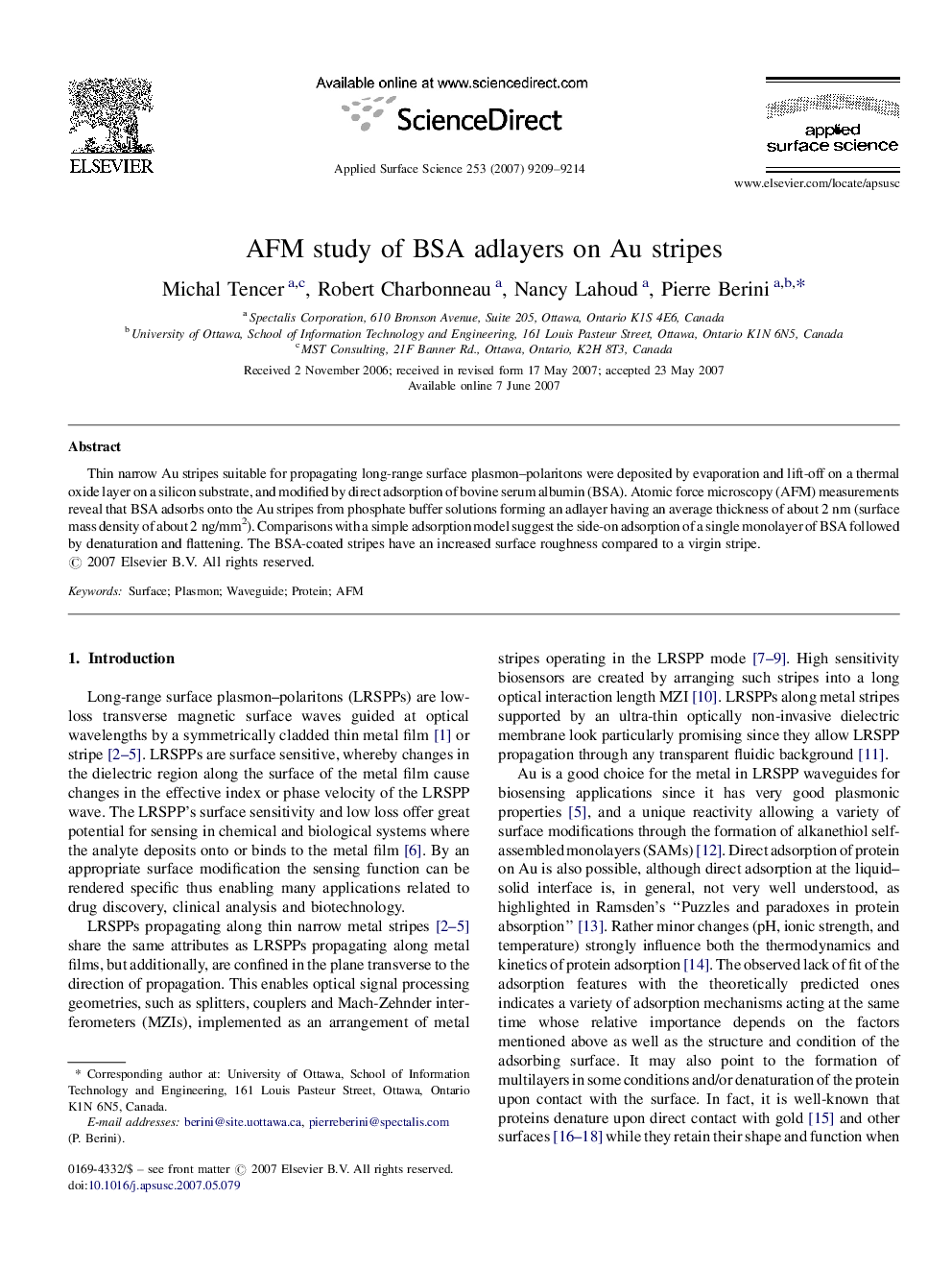| Article ID | Journal | Published Year | Pages | File Type |
|---|---|---|---|---|
| 5363431 | Applied Surface Science | 2007 | 6 Pages |
Abstract
Thin narrow Au stripes suitable for propagating long-range surface plasmon-polaritons were deposited by evaporation and lift-off on a thermal oxide layer on a silicon substrate, and modified by direct adsorption of bovine serum albumin (BSA). Atomic force microscopy (AFM) measurements reveal that BSA adsorbs onto the Au stripes from phosphate buffer solutions forming an adlayer having an average thickness of about 2Â nm (surface mass density of about 2Â ng/mm2). Comparisons with a simple adsorption model suggest the side-on adsorption of a single monolayer of BSA followed by denaturation and flattening. The BSA-coated stripes have an increased surface roughness compared to a virgin stripe.
Related Topics
Physical Sciences and Engineering
Chemistry
Physical and Theoretical Chemistry
Authors
Michal Tencer, Robert Charbonneau, Nancy Lahoud, Pierre Berini,
